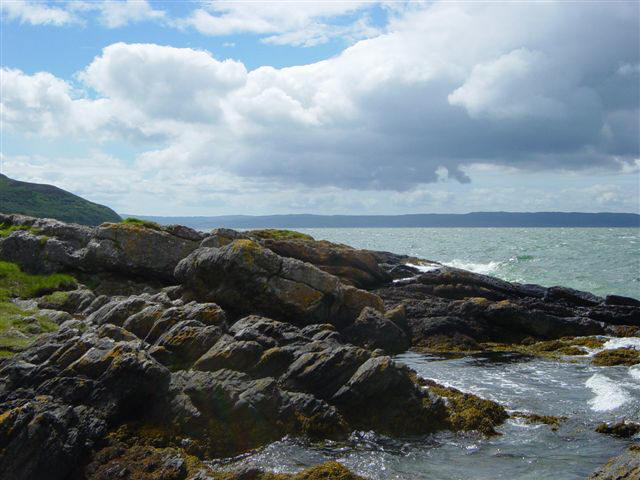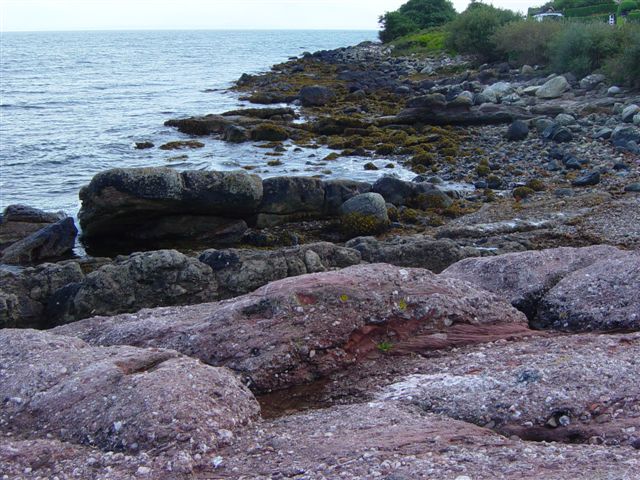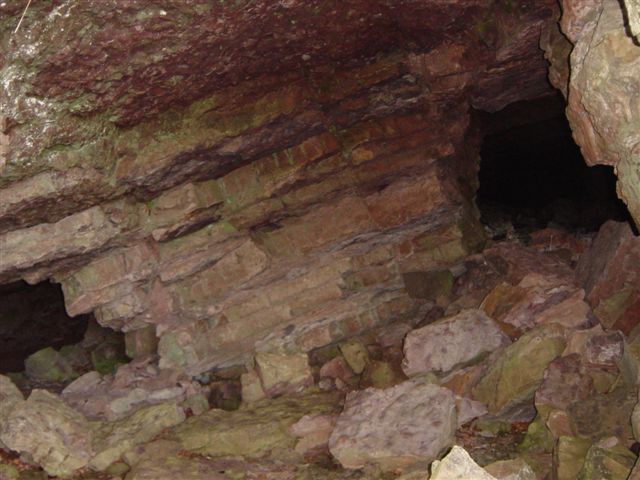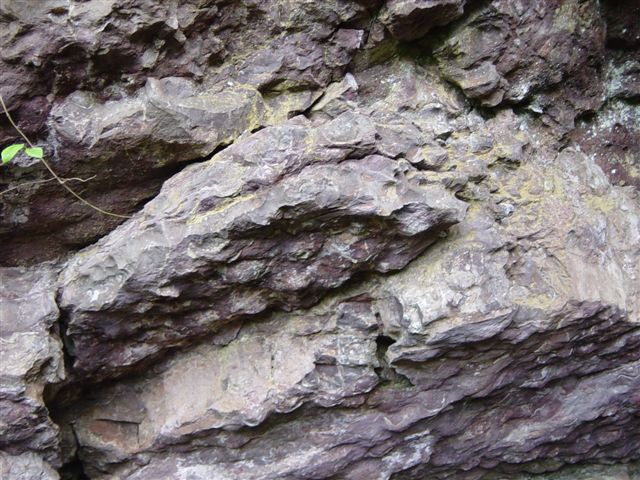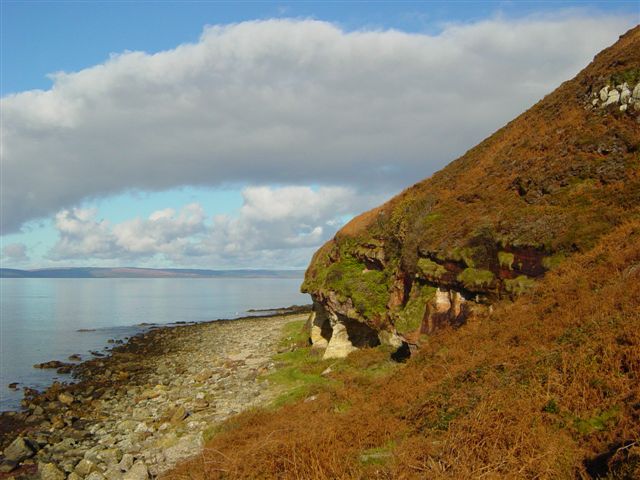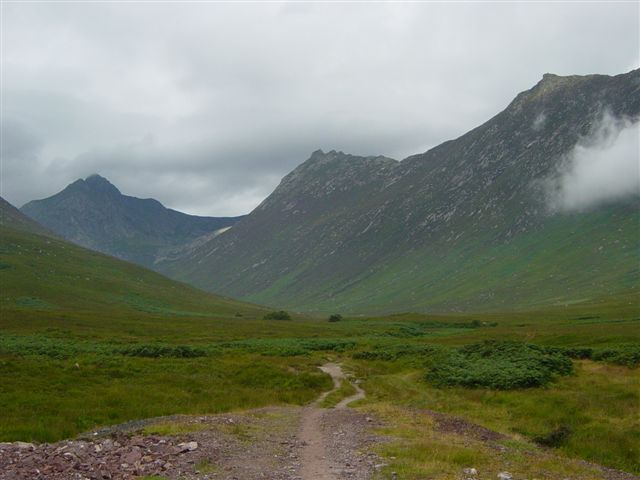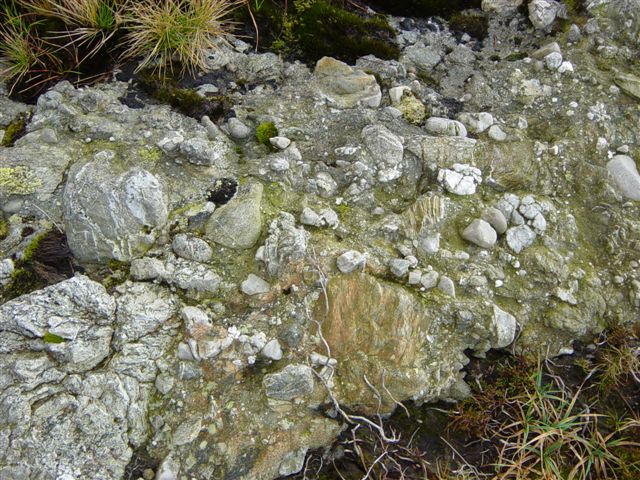| 23-24 September 2006 (plus additional visit 29th September) | |||||||||||||||||||||||||||||||||||||||||||||
| ARRAN | |||||||||||||||||||||||||||||||||||||||||||||
| Tour: Geo Participants: 7 | |||||||||||||||||||||||||||||||||||||||||||||
| Weather: A mixed Saturday and a wet Sunday! | |||||||||||||||||||||||||||||||||||||||||||||
Summary of Geology: Arran is world renowned for the remarkable variety of its rock types. In fact, rocks of all geological Periods are to be found, with the exception of the Silurian. The oldest rocks on the island are the Dalradian schists, those ancient rocks of mostly sedimentary origin found across Scotland north of the Highland Boundary Fault, from Argyll to the north-east coast. Their age may cover the range 850 - 510 Ma, so they are mostly pre-Cambrian in age, but some are Cambrian. They were later to be metamorphosed during the Caledonian Orogeny. Ordovician (510 - 440 Ma) rocks on Arran are limited to a narrow outcrop which crosses the North Sannox burn a little below the Sannox - Lochranza road bridge. They include pillow lavas, and a sedimentary succession which has yielded brachiopods and trilobites. These rocks were also affected by the later Caledonian orogenic movements. As we have seen, the succeeding Silurian Period is not represented on Arran. At around 420 Ma, the Iapetus Ocean finally closed and the micro-continent of Avalonia collided with Laurentia throwing up a vast mountain range across Scotland and causing the metamorphism of the Dalradians. This was the Caledonian Orogeny. Following this, in the Devonian Period (410 - 360 Ma), Scotland lay at a latitude of about 15 degrees S. The climate was dry and arid, but occasional flash floods caused rapid erosion of the high Caledonian mountains, forming thick successions of red sandstones, conglomerates and mudstones on the adjoining floodplains. These rocks, of Old Red Sandstone facies, cover large areas of Arran to the east and south of the Northern Mountains, the Lower and Upper divisions being separated by an unconformity. In the Carboniferous (360 - 290 Ma),Scotland lay at equatorial latitudes, and the climate became, for a time, hot and humid. The Caledonian Mountains were now eroded to their roots, the land subsided, and so the Carboniferous, overall, was a period of shallow seas, estuaries, deltas and swamps. Rocks of this age are to be found in several fault-bounded strips adjacent to the Tertiary intrusion, and generally dipping away from it. The Calciferous Sandstone Series at the base, is interrupted by rocks of igneous origin, as huge volcanoes poured out thick lavas here, and throughout the Midland Valley of Scotland. The Carboniferous Limestone Series follows, a time when limestones, sandstones and shales were laid down on Arran, including the Corrie Limestone at its base. The Coal Measures Series includes sandstones, shales and fireclays. Coals are rare, being totally absent at Corrie, but a little coal was once quarried near Laggan, on the north-east coast, and was used in that area, in salt pans and limestone burning. Following the Carboniferous Period, continental collision took place to the south of the British Isles of the micro-continent of Armorica, as it moved north to collide with the united continent of Laurentia/Avalonia, during the Variscan Orogeny. This caused intense folding in south western parts of England and Wales, but in Scotland, there was only gentle elevation and folding of the underlying rocks, exposing them to erosion. In fact, by Permian (290 - 245 Ma) times, following the Variscan, all the continents of the world were joined as the one supercontinent of Pangaea. Britain lay at its heart, at about 15 degrees N, a hot, dry, land-locked setting, dominated by desert sand dunes. Throughout southern Scotland, the resulting aeolian red sandstones have been largely lost to erosion, but they are preserved in many parts of Arran, notably in the coastal strip starting at the south end of Corrie and stretching to the south of Brodick. At the King's Cave, uppermost Permian rocks are grey or yellowish sandstones. The rocks of the Permian and the succeeding Triassic Period (245 - 210 Ma) are often collectively known as the New Red Sandstone since they are often very similar. On Arran, however, although the change is gradational, the Triassic rocks are strongly contrasting, being shales, marls, limestones and cornstones, frequently variegated in greens and reds, and laid down in an environment of river floodplains and shallow lakes. Jurassic (210 - 145 Ma) and Cretaceous (145 - 65 Ma) times are represented on Arran only by small masses of sediments which became incorporated in the agglomerates of the Tertiary volcanic Central Ring Complex. They form part of the evidence for a much more extensive cover of these Mesozoic rocks prior to denudation in Tertiary times. It is believed that the Cretaceous seas covered all but the highest peaks of Scotland, laying down an extensive cover of chalk. In the Tertiary (65 - 2 Ma) at around 60 Ma, the splitting open of the North Atlantic Ocean caused plutonic and volcanic activity on a grand scale in western Scotland. The Northern Granite of Arran pushed its way upwards, never reaching the surface but doming all the older rocks so that most of them can be seen today to be dipping everywhere away from the granite. This applies to the structural folding in the Dalradians and the sedimentary bedding of later formations, notably the Old Red Sandstone and the Carboniferous rocks. The Central Ring Complex is a later and very complicated volcanic centre, which pushed its way upwards through the sedimentary cover of rocks varying from Old Red Sandstone to Cretaceous age and whose centre later collapsed to form a great caldera. Later Tertiary times were a period of denudation on an unprecedented scale. No trace of sediments from this time are found in Scotland, other than thin soil development between lava flows in parts of north-west Scotland but these lavas have preserved small areas of Mesozoic rocks which were elsewhere stripped away by erosion. On Arran, further evidence for that former cover is found in the Central Ring Complex, now eroded so as to reveal those Mesozoic fragments, as well as older rocks, which fell or became incorporated in the volcanic complex. And not only has the sedimentary cover above the granite (which must have been at least a kilometer thick) been completely removed but the granite itself has been deeply eroded. Finally, in Quaternary times (2 Ma - recent), the finishing touches to the landscape as we see it today were applied. The valleys were smoothed and widened by glacial ice and as the ice melted, great thicknesses of moraine were left behind. Numerous changes in sea level occurred, most obviously resulting in the 25 foot raised beach which is so prevalent not only on Arran, but throughout Scotland and which can be explained by the release of the weight of the ice at the end of the ice age, around 10 000 years ago. |
|||||||||||||||||||||||||||||||||||||||||||||
|
|||||||||||||||||||||||||||||||||||||||||||||
